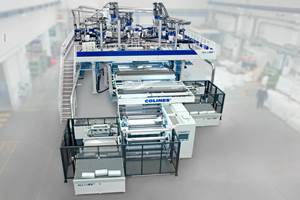Wood on Plastics: Flat to Modest Growth in Consumer Products
It is difficult to forecast the demand for most types of consumer products in the coming year without using the word 'slog.'
It is difficult to forecast the demand for most types of consumer products in the coming year without using the word “slog.” The outlook is noticeably dimmer than just three months ago. Since then, the U.S. economy has suffered a series of unpredictable shocks and there was also a significant downward revision to the recent GDP data, including the data that measures consumer spending. The U.S. economy will most likely avoid another recession, but the growth rate will remain uncomfortably sluggish for another 12 to 18 months.
Most of the economic discussion in recent months has centered on jobs. The employment situation will improve very slowly during the next few quarters. And the trend in the employment data will correspond closely with the trend in demand for consumer products.
The most important indicator that manufacturers of consumer products should monitor closely in the coming year is the trend in housing starts. This is true for suppliers of all consumer goods, not just housewares. For reasons that are not completely understood by analysts, the demand for new houses has always been the best indicator of Americans’ propensity to consume. And though not every American wants a new house at the end of a recession, it seems that when it is a good time to buy a new house, it is also a good time to buy almost every other kind of consumer goods or services.
We all know that the last recession was caused by the bursting of the housing bubble. What we are only starting to learn is how long it takes to recover from such a burst. The recession officially ended more than two years ago, but since then, housing and real estate (and also employment and consumer confidence) have struggled. Mortgage rates are at historic lows, house prices have plummeted by an average of over 30%, housing has never been more affordable, and still demand for houses is stuck at historic lows. It appears the economy was more severely damaged than we first thought.
If we take a step back and assess this situation from a longer-term perspective, it now looks like the housing market will not begin an earnest recovery until 2013. Falling prices may mean that houses are more affordable, but the ongoing drop in prices is scaring would-be buyers. Prices should stop their decline sometime in 2012, and a reliable uptrend in prices will begin in 2013.
Rising prices will be a signal to American consumers that it is now safe to buy, and it will also be a signal to businesses that it is now safe to hire new workers. Incomes and spending will rise simultaneously, and demand for consumer products will also increase.
So even though it seems like the problems we currently face are interminable, there is a path from where we are now to a stable, self-sustaining economic recovery. This is the environment that is best suited for the success of the consumer-products industries. How quickly we get there is still not clear, but my personal confidence level will start to escalate once housing starts begin to rise.
WHAT THIS MEANS TO YOU
•In the current environment, expect your customers to look for parts that emphasize practicality over style and convenience.
•Sustainability is here to stay. OEMs and processors will have to accept increasing responsibility for the disposal/recycling of their products.
•Prices for gasoline, heating oil, and electricity remain quite high, and they will go higher as the economy improves. Water and sewer rates will also rise faster than they have in the past. Energy and resource efficiency will be in high demand. We are hearing word that appliance OEMs are beginning to roll out more energy-efficient designs that will impact the design of plastic parts.
Related Content
In Sustainable Packaging, the Word is ‘Monomaterial’
In both flexible and rigid packaging, the trend is to replace multimaterial laminates, coextrusions and “composites” with single-material structures, usually based on PE or PP. Nonpackaging applications are following suit.
Read MoreABC Technologies to Acquire Windsor Mold Group Technologies
The Tier One automotive supplier with compounding and blowmolding machine capabilities adds the 50-yr-old molder and moldmaker.
Read MoreYoung Stretch-Film Processor Bets on Nanolayers
Going up against companies with as much as double its capacity, young stretch-film processor Zummit believes that new technology — notably 59-nanolayer films — will give it a competitive edge.
Read MoreFoam-Core Multilayer Blow Molding: How It’s Done
Learn here how to take advantage of new lightweighting and recycle utilization opportunities in consumer packaging, thanks to a collaboration of leaders in microcellular foaming and multilayer head design.
Read MoreRead Next
Why (and What) You Need to Dry
Other than polyolefins, almost every other polymer exhibits some level of polarity and therefore can absorb a certain amount of moisture from the atmosphere. Here’s a look at some of these materials, and what needs to be done to dry them.
Read MoreAdvanced Recycling: Beyond Pyrolysis
Consumer-product brand owners increasingly see advanced chemical recycling as a necessary complement to mechanical recycling if they are to meet ambitious goals for a circular economy in the next decade. Dozens of technology providers are developing new technologies to overcome the limitations of existing pyrolysis methods and to commercialize various alternative approaches to chemical recycling of plastics.
Read More




.png;maxWidth=300;quality=90)















